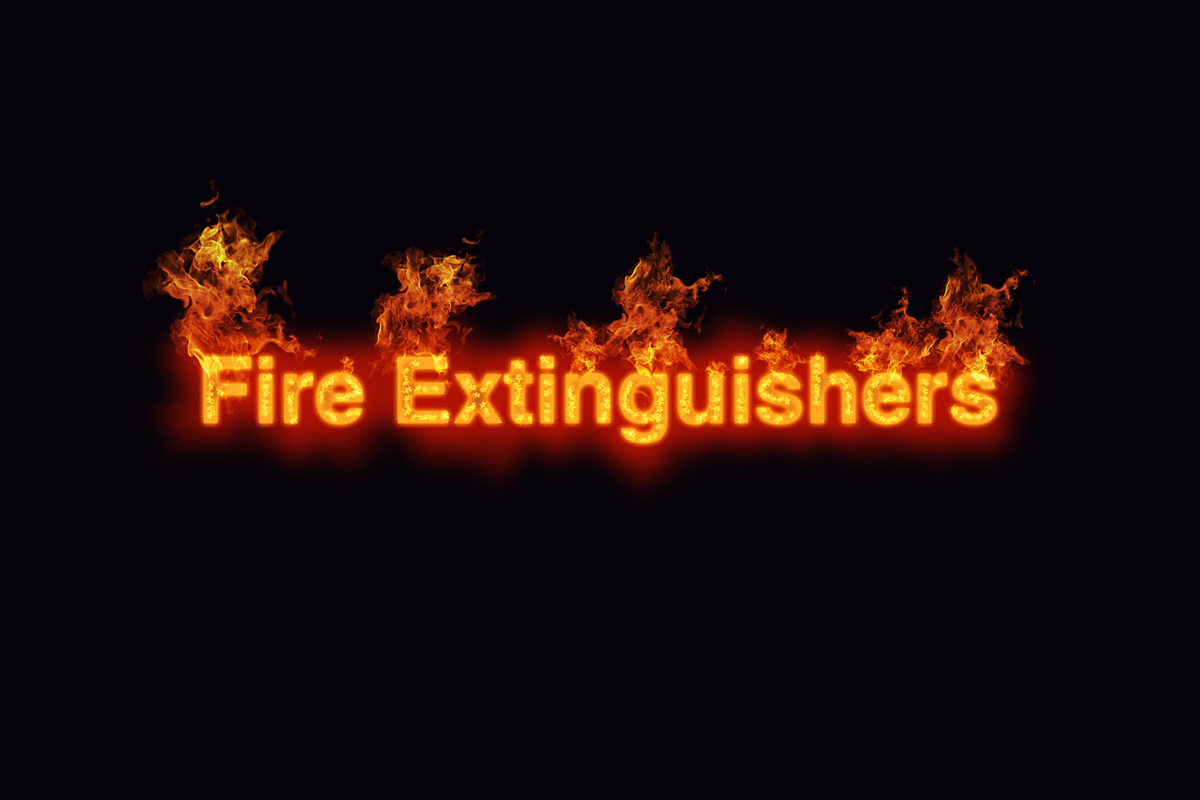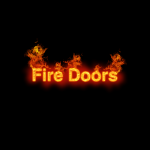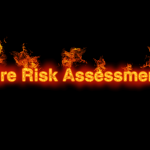Regulations that govern the use of fire extinguishers in the United Kingdom fall under the RRO or Regulatory Reform (Fire Safety) Order 2005.
Virtually all commercial business premises, except for a few, fall under these regulations. As is the case with most laws that affect places of work, fire extinguisher regulations are not as straightforward as you’d want them to be.
Fortunately, however, this legislation has been quite effective in helping reduce the number of fires in business premises across the United Kingdom.
Contents
- 1 What is the Current Legislation on Fire Extinguishers in the UK?
- 2 How Many Fire Extinguishers Am I Required to Have?
- 3 What Other Types of Extinguishers Should Be Installed in Commercial Buildings?
- 4 Where Should Fire Extinguishers Be Located?
- 5 How Should Fire Extinguishers Be Fitted?
- 6 What Is Fire Extinguisher Commissioning?
- 7 How Often Should Fire Extinguishers Be Serviced?
- 8 What Evidence Do I Need to Prove That My Extinguishers Have Been Serviced to RRO Regulations?
- 9 How Often Should Extinguishers Be Replaced?
- 10 Can I Get My Fire Extinguishers Refilled Instead of Having Them Replaced?
- 11 Where Can I Buy Fire Extinguishers?
- 12 Conclusion
What is the Current Legislation on Fire Extinguishers in the UK?
In England and Wales, all fire safety legislation for non-domestic buildings is covered by the RRO (2005). According to the Order, the proper fire-fighting equipment, including portable fire extinguishers, should be provided where there’s a fire risk.
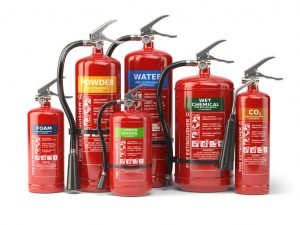 The Regulatory Reform Order states that it’s the responsibility of managers and business owners, as the designated Responsible Persons, to carry out fire safety risk assessments and to implement and maintain a fire management plan.
The Regulatory Reform Order states that it’s the responsibility of managers and business owners, as the designated Responsible Persons, to carry out fire safety risk assessments and to implement and maintain a fire management plan.
Since the legislation isn’t prescriptive in many areas, fire safety risk assessments are vital and apply to all businesses regardless of how small they are. The responsible persons must ensure that staff know where extinguishers are located and know how to use them. They also must ensure everyone knows the evacuation procedures and to hold fire drills.
Failure to protect workers by providing them with the knowledge and equipment they need to fight a fire and stay safe could result in injuries or even death. To make matters worse, most insurance companies will refuse to pay for damages on negligence grounds.
If you’d like to know more about the maintenance and provision of fire extinguishers in the UK, check out British Standard 5306. The Standard offers guidelines on which fire extinguishers to use where and on which types of fire.
How Many Fire Extinguishers Am I Required to Have?
According to the Regulatory Reform Order, there should be at least two Class-A fire extinguishers on each floor of a building – unless it’s tiny, in which case a single Class-A extinguisher is acceptable.
3-litre or 6-litre foam or 9-litre water extinguishers are the most common in commercial buildings around the UK, though others like CO2 extinguishers are common too!
All premises with electrical equipment in them, almost all commercial buildings in the country, must have at least 2-kilogramme CO2 extinguishers and 5-kilogramme extinguishers if there are 415V-rated equipment in the building.
The number of extinguishers required will depend on the size of the building/area being protected and whether the organisation is classed as high or low risk. However, to get a rough estimate of how many extinguishers you will need, divide your floor area, in square metres, by 200 and round up the figure to see how many 9-litre water extinguishers will be required.
If the building has an automatic suppression or sprinkler system in place, fewer extinguishers might be needed.
What Other Types of Extinguishers Should Be Installed in Commercial Buildings?
The type of equipment you have on your premises will determine whether or not you need to have other types of extinguishers in your business. However, of all other options, the most common extinguisher is the CO2 extinguisher, which is generally used to put off electrical fires.
According to fire extinguisher regulations in the UK:
- All commercial buildings with electrical equipment, from computers to power plants, must have at least 2-kilogramme CO2 extinguishers to remain compliant.
- Where there’s 415-volt rated equipment, then 5-kilogramme CO2 extinguishers must be provided.
There are few exceptions or instances where a commercial building will not need a CO2 fire extinguisher, which is why these extinguishers are often seen paired with water and foam extinguishers.
Other fire extinguisher types you might need are:
- Dry powder extinguishers: these are typically used to fight gas risks in places like boiler rooms and aren’t recommended for any other use indoors.
- Wet chemical extinguishers: typically used in kitchens that operate deep-fat fryers.
Where Should Fire Extinguishers Be Located?
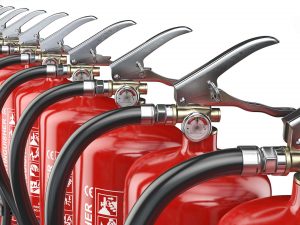 The ‘standard pair’, i.e., CO2 and water-based fire extinguishers, are typically located near fire alarm call-points and exits. However, if a building has many call-points or exits, then the number of fire extinguishers you need will increase, so the 30-metre rule comes into effect.
The ‘standard pair’, i.e., CO2 and water-based fire extinguishers, are typically located near fire alarm call-points and exits. However, if a building has many call-points or exits, then the number of fire extinguishers you need will increase, so the 30-metre rule comes into effect.
This 30-metre rule comes from BS5306 of UK British Standards and dictates that you shouldn’t be more than 30 metres away from a fire extinguisher on any level of your commercial building.
‘Specialist’ fire extinguishers like dry powder extinguishers and wet chemical extinguishers must be set in a location that’s within easy reach of whatever fire hazard, e.g. a deep-fat fryer.
How Should Fire Extinguishers Be Fitted?
To stay compliant with extinguisher regulations, you must ensure that your fire extinguishers are attached to a stand or fixed to a wall. The reason for this is to ensure that people don’t move them around unnecessarily.
All fire extinguishers should also be clearly labelled with fire extinguisher identification signs fixed to the wall or stand. Extinguisher identification signs help identify extinguishers and when and how they should be used.
What Is Fire Extinguisher Commissioning?
Fire Extinguisher Commissioning means that a fire extinguisher has been inspected and approved for use. In the UK, extinguishers aren’t compliant with existing legislation until they’ve been commissioned, irrespective of whether you have the correct extinguisher sizes and types in the right locations.
Things typically checked during fire extinguisher commissioning include
- Whether the fire extinguishers are properly assembled
- Whether horns and hoses are correctly attached
- If the extinguishers are damaged
- If they’re of the right pressure or weight
When it comes to extinguisher commissioning, the only person that can inspect and approve your extinguishers is an extinguisher engineer. They must ensure that your extinguishers are fit for use per regulations.
How Often Should Fire Extinguishers Be Serviced?
According to RRO regulations, extinguishers must be serviced at least once a year by a certified fire extinguisher engineer with BAFE qualifications.
Things engineers check during a fire extinguisher service include:
- Condition and state of each fire extinguisher
- Expiry dates
- Condition of the pin and hose
- Signs of tampering
- Clarity of instructions and labelling
- Correct pressure and weight
Once the engineer is done servicing your extinguishers, they will provide you with a report and let you know if extinguishers need to be replaced for you to stay compliant with RRO regulations.
What Evidence Do I Need to Prove That My Extinguishers Have Been Serviced to RRO Regulations?
If during a fire and rescue service or health and safety visit, you need to prove that your fire extinguishers have been inspected and serviced, there are several things to look out for:
- Your extinguisher(s) will have a service label on them showing that when they were serviced and when the next inspection and service is due.
- The label will indicate the outcome of the last inspection and service as either one of the following:
- was refilled
- received basic service
- needs to be replaced (which you should have already done)
- There’ll be something like an anti-tamper tag placed in the pin to keep it from being pulled out accidentally. However, it is worth noting that this isn’t the case for fire extinguishers that use plastic pins as they have a different design. For such extinguishers, the pin must be replaced each year.
- The O-Ring on your extinguishers will have been replaced.
- You’ll have an in-date service certificate from the BAFE-qualified organisation or engineer that serviced your extinguishers.
How Often Should Extinguishers Be Replaced?
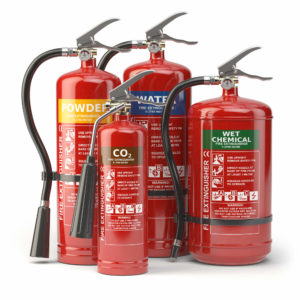 BS5306 of the British Standard recommends that water, powder and foam extinguishers be tested by discharge at least once every five years and replaced or refilled. For CO2 extinguishers, the period is every ten years. CO2 fire extinguishers are either hydraulically tested or replaced at the ten-year point.
BS5306 of the British Standard recommends that water, powder and foam extinguishers be tested by discharge at least once every five years and replaced or refilled. For CO2 extinguishers, the period is every ten years. CO2 fire extinguishers are either hydraulically tested or replaced at the ten-year point.
Please note that the Environment Agency and BAFE advise against discharging water-based extinguishers down drains or onto open land to avoid creating environmental hazards.
If you are currently thinking of replacing your extinguishers, consider replacing them at the test point as opposed to “test discharge”. The good thing about this option is that it allows your returned extinguishers to be disposed of in an environmentally friendly way by experts.
If one of your extinguishers is discharged, damaged, or is no longer safe to use, make sure you have it replaced immediately.
Can I Get My Fire Extinguishers Refilled Instead of Having Them Replaced?
The pouring of fire extinguisher contents into public drains is not advised for environmental reasons, which is why the latest legislation recommends replacing your fire extinguishers rather than having them refilled. As a result of this, the cost of replacing a fire extinguisher today is almost at par with having one refilled.
Where Can I Buy Fire Extinguishers?
You can buy extinguishers for your business premises from local fire protection companies or online sellers. When purchasing fire extinguishers for your commercial building, make sure they come with all the relevant fixings and ID signs and that they have visible labels indicating the type of extinguisher they contain.
Conclusion
We hope this guide has been useful to you. However, if you still need help with UK Fire Extinguisher Regulations, then you’ve come to the right place.
To learn more about how fire extinguisher regulations affect you and your business or if you’re still unclear about some regulations, get in touch with us today, and we’ll send one of our accredited engineers over to survey your building.

